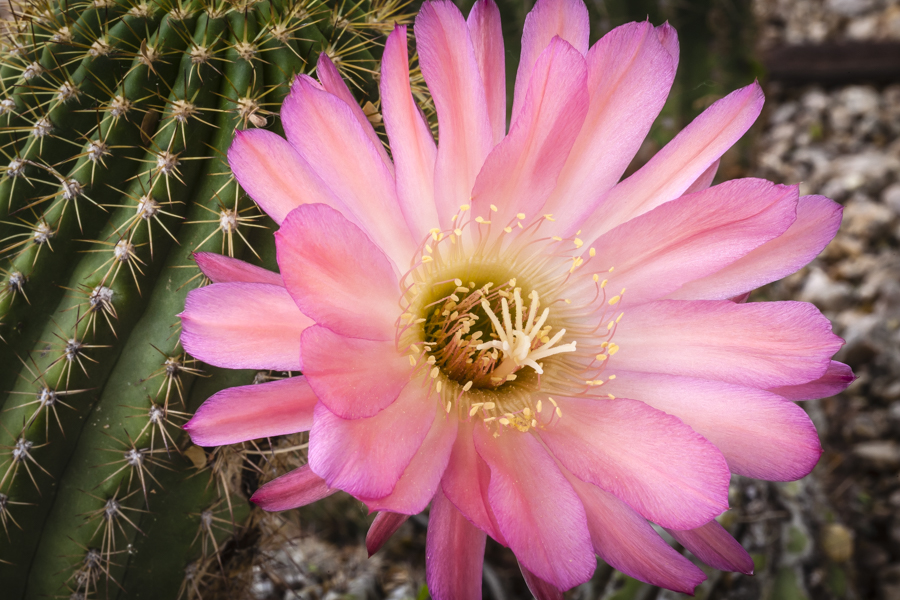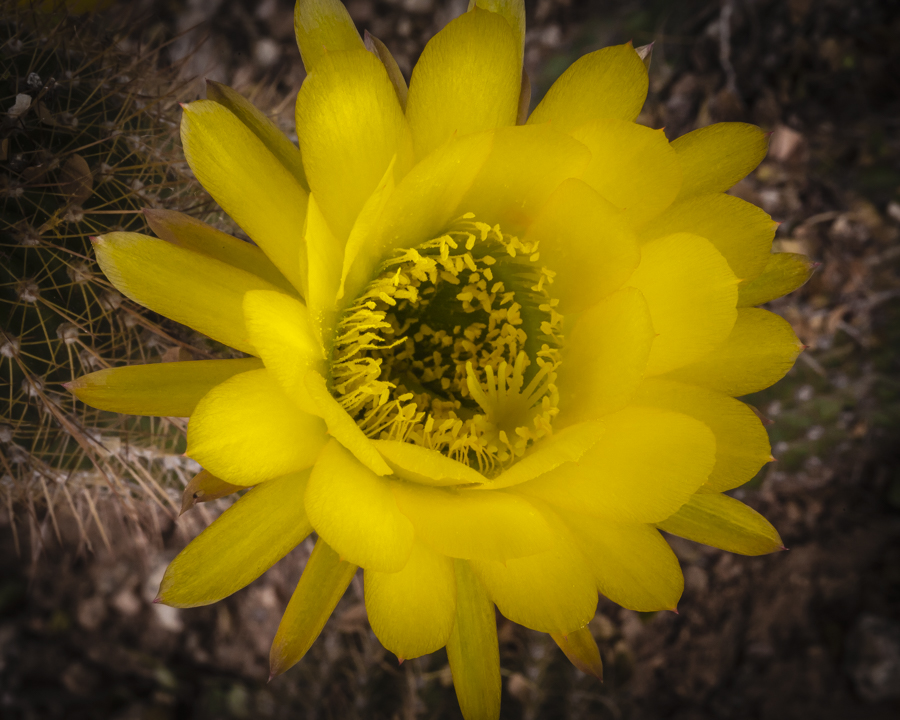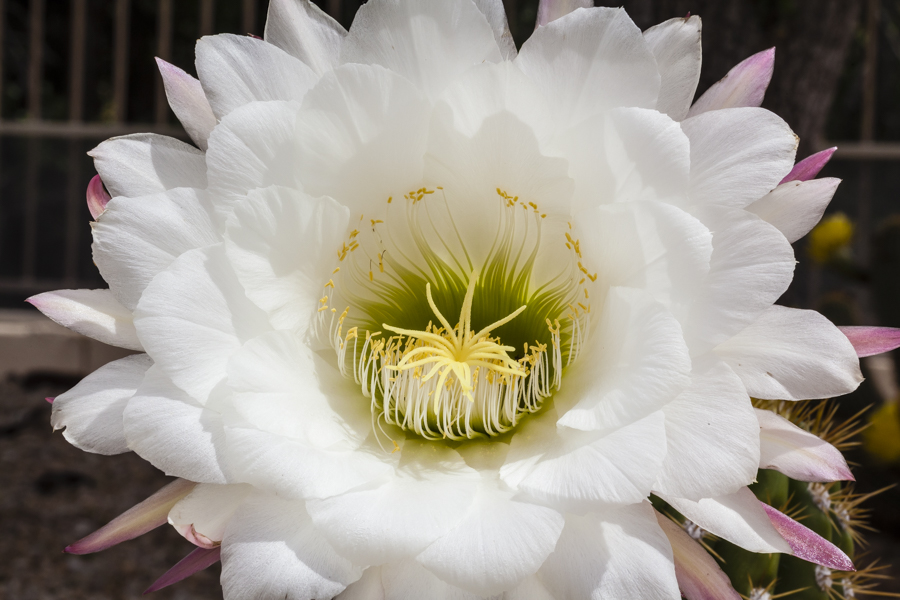Spring made its official arrival about 2-1/2 weeks ago. The usual signs of the season are appearing, most evidently in the blooming of the desert flora.
We have a garden in the back of our home, mostly inherited from the previous owners. It’s a small oasis etched from the surrounding desert, containing a mix of trees, bushes and cacti. All of them flower at various times of the year, but never so vibrantly as in the month of April. Yesterday and today marked the arrival of my favourite species, the flower of the echinopsis cactus. Echinopsis is a large genus of cacti native to South America. The 128 species range from large and treelike types to small globose cacti.
The plants that we have resemble most closely the echinopsis angelesii, according to the CactiGuide.com. They go by a number of common names, such as the trumpet flower. I’ve decided to refer to them as “Queen for a Day”, since the blooms last only about 24 hours. A shame.
Following are the photographs, beginning with this stunning pink one.

The next one is also very colourful, a brilliant gold.

But, my favourite is the classic white flower with its subtle shading of pink.

If you’re not interested in how these pictures were taken, read no further.
I paid attention to capturing the delicacy of the petals and the detail of the pistil and stamen (those funny looking parts in the centre). The photos were taken using a Canon Macro 100 mm, f/2.8 lens, designed specifically for close-up photography of small objects. The ratio of the subject size on the film plane (or sensor plane) to the actual subject size is known as the reproduction ratio. A macro lens is one capable of reproduction ratios of at least 1:1.
These photos would be described as “close-ups”. The subject in question are between 10 and 20 cm in diameter, much larger than my camera sensor, so the reproduction ratio is much smaller than 1:1. Had I focused only on the yellow, star-shaped stigma in the centre of the flower, the reproduction ratio would have been very close to 1:1 and that photo could be termed a macro image.
The camera settings I used were: 1/25 to 1/200 sec, f/32, ISO 800 and the focal length was 100mm. The distances to the subjects varied between ~1.0 metre and ~0.3 m, depending on the size of the flower. With such short distances and a large focal length, I required the very small aperture to achieve sufficient depth-of-field to have the entire subjects in focus. And lastly, I used a tripod for stability.

Beautiful…wish they had been blooming when we were there….next year 🙂 Helen
Well done peter. I guess all the rain has helped the desert flowers;
Dave
Beautiful!
When are you coming back to the Mountains??
The white ones are my faves too:-)